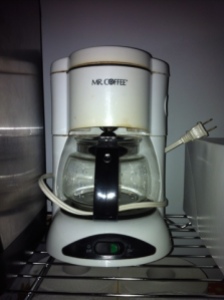Last night I swallowed my cynicism and watched the entire airing of the 2012 Academy Awards. There ought to be an award for watching the whole thing. I think I would at least get a nomination for Best Academy Awards Watcher in a Supporting Role, but would probably have had to read my prepared acceptance speech to only my mother, during my after-party at Applebee’s, after I lost to someone who did not throw up in his mouth a little bit every time an Oscar-winner used the word “incredible” to describe someone they worked with on the film.
My favorite part of this year’s Oscars, other than that commercial for Hulu where the streaming television service melts someone’s brain, were these little montages, sprinkled about the broadcast like tarragon, of famous actors like Reese Witherspoon, Brad Pitt, and Barbra Streisand, fawning about how they fell in love with the movies. I was grateful that these busy celebrities took the time to remind me of the power of movies to take me someplace far, far away from $15 and three hours of my life.
The montages got me thinking about the movies that I saw as a child that made me fall in love with the movies. If I had been sitting in front of the camera and shown a cue card with “SAPPY GUSHING” written on it, I would have had to say something about “Gremlins,” a 1984 Christmas movie about these little cute furry mammals that turn into medium-sized menacing reptilian monsters with homicidal tendencies and depraved indifference to human life.
“When Mrs. Peltzer shoved that Gremlin into the microwave and hit the power button,” I would say, looking slightly off-center, eyes tearing just enough to glisten but not quite filling to the brim, “I knew that these movies…these films…these…moving pictures on moving film had a way of bringing imagination to life and then exploding it all over the inside of a microwave oven. From that point on, I was hooked.”
Or perhaps I would talk about “Who Framed Roger Rabbit,” a partially animated movie about a cartoon rabbit, the eponymous Roger, who is framed with a murder and has to go on the lam with a human detective named Eddie Valiant.
“That scene where Roger Rabbit and Eddie are handcuffed together,” I would say, leaning in towards the camera and shaking my hands, “and Eddie is trying to saw the handcuffs off with a hacksaw, and the box he’s leaning on keeps wobbling, so Roger Rabbit takes his hand out of the handcuffs to hold the box steady, so that now Eddie is sawing off handcuffs that are attached to only his hand, and Roger Rabbit sees that Eddie notices this and that Eddie looks mad, so Roger Rabbit quickly slips his hand back in the cuffs, and smiles, and Eddie yells at him, ‘You mean you could’ve taken your hand out of that cuff at any time?’ And Roger Rabbit replies, ‘No, not at any time. Only when it was funny.’
“Now,” I’ll say as I nod my head and point with my index finger at nothing, “that cartoon rabbit’s honesty in that scene is, to me, the essence of what it means to be an actor. That and sunglasses.”
But if I had to pick just one movie that hooked me onto cinema that I can watch in my home for free years after the theater release, it would have to be “The Wizard of Oz.” I am told that I saw that movie for the first time when I was three years old, and that when Dorothy wakes up at the end, in her home in Kansas, surrounded by loved ones she feared she would never see again, and says, “Oh, Auntie Em—there’s no place like home!” that I started crying, crying the tears of innocent joy that could be brought forth only from that perfect union of human truth and human emotion that is the hallmark of the movies.
Or maybe I knew I was being watched and wanted to give my parents a cute story.

